Home is even more comfortable with modern technologies: ways to control heating remotely
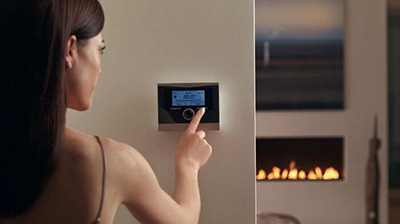
Control system - the ability to directly influence the heating of the house remotely.
It is divided into three types of work: general, zonal and temporary.
First affects the entire structure, second — to individual premises.
A third adjusts the temperature depending on the time of day.
Automated heating control
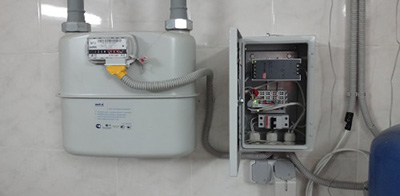
Exists two types of control devices: thermostatic valve (TRV) and room temperature regulator (RTR).
Their main difference is in the operating principle. The first is controlled exclusively manually, the second is partially autonomous.
Thermostatic valve
TRV consists of two components — directly the valve and the thermal head. The first affects the second, forcing the rod to move, the change of position of which decreases or increases the temperature.
To ensure interaction between the parts, the device has a built-in bellows, filled with technical liquid. Temperature affects it, causing it to expand or contract. Under the effect of pressure, the water pushes thermal head. The latter changes the position of the rod to regulate the amount of heat emitted by the heating device.
The valves are divided into three types. They differ in the way they are connected to the harness:
- direct expansion valve is mounted on pipes, if the latter run along the walls of the room;
- Angle valve is installed in the piping, brought out into the room near the floor or stream;
- Axial is used in all other cases.
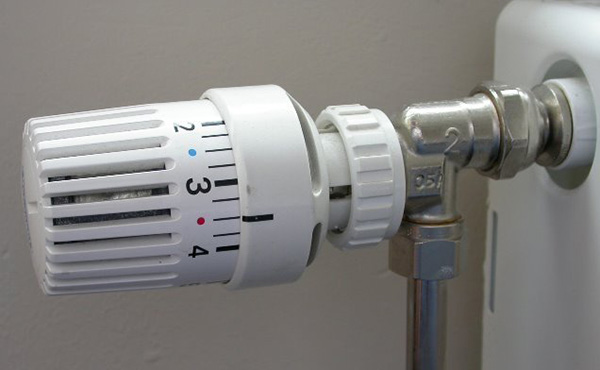
Photo 1. Thermostatic angle valve, compact, allows you to adjust the temperature in the room.
Advantages of thermostatic valves: do not require specific maintenance, are compact and allow you to create a beautiful interior. With their help, the temperature of the rooms is adjusted separately.
Disadvantages of TRV are the complexity of setup, dependence on the availability of water supply, and frequent failures.
Temperature control device
The thermostat is an automatic device. Its purpose is Setting the amount of heat, issued by the boiler to the piping. The device monitors the sensor readings, processes the information, and sends a command to change the power if necessary. In most cases, the KRT have built-in software, but when connecting additional devices, you will need to update it.
Room thermostats are divided into categories based on placement, functionality or technical features.
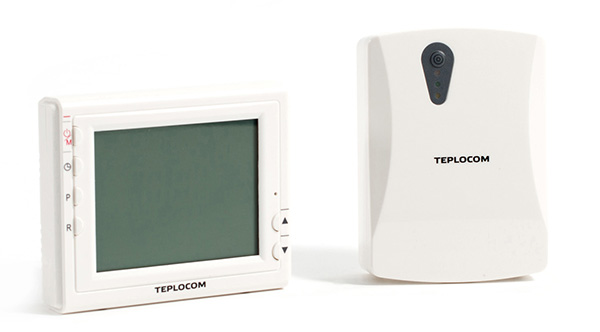
Photo 2. Wireless thermostat for automatic temperature control Teplocom, does not create an electromagnetic field.
According to the type of installation, there are:
- Wired CRTs, the contacts of which are connected by a winding. They have a long command transmission range, but are subject to some negative effects. They are connected to the electrical network for power supply, which causes malfunctions.
- Wireless thermostats use periodic signals to communicate.
They do not create an electromagnetic field, so they are safe to use. Their main advantage is the absence of a winding, which requires space. The main disadvantage is the presence of a weak signal in buildings made of reinforced concrete blocks.
By functionality:
- Simple CRT maintains the set temperature in the room.
- Programmable - can be set to change the climate several days in advance.
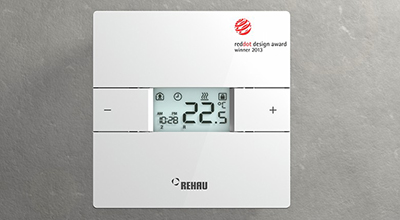
According to their technical components, thermostats are divided into:
- electronic;
- mechanical;
- combined.
KRTs have several advantages:
- To get convenience, it is enough to set up the device once: it will independently adhere to the program code entered into it.
- Using the device allows you to reduce fuel costs, which leads to savings.
The thermostat has two disadvantages:
- Wired thermostats include cables, which negatively affects the interior.
- KRTs are expensive, even without additional functionality.
Automatic system
Weather-dependent ones work by determining the ambient temperature, and they can be controlled manually. Heating controllers are used to combine the piping into a complete system for automation.
Weather-dependent automation
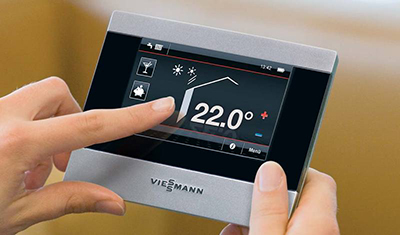
The device is several software tools, which controls the operation of the heating system.
An algorithm is entered into the device: it compares the readings of temperature sensors installed in the house and on the street.
After comparing the values, automation sends a command — increase, do not change or reduce fuel consumption. The operating principle allows you to influence the room climate in advance, focusing on the outside weather.
This is both a plus and a minus of the device. The automation works with a slight delay, due to the long change in outside temperature. Modern buildings slowly lose heat, so the controller takes a long time to process dataAs the environment cools, the device slightly heats the room.
The same principle works in the opposite direction and concerns not only the change of day and night, but also the seasons. In the latter case - with a sharp change.
Reference! In some situations the delay is particularly noticeable, such as when using warm floors.
The device has the following advantages:
- Independence from man. Once configured, it is left to work on its own. The device will perform its functions, sometimes requiring repair or replacement of some parts.
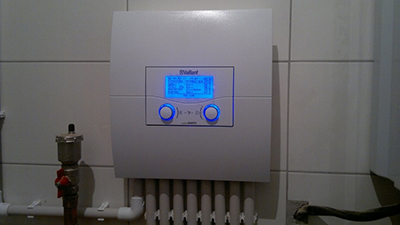
- Saving money. The automated system itself constantly monitors fuel consumption, which is extremely useful at any increase in temperature. With a decrease in the need for heating, costs are reduced.
Flaws:
- High cost of the device when connected to a floor-standing boiler.
- The weather-dependent system requires periodic maintenance and initial setup. These processes are quite complex, so it is necessary to call a specialist. The automation is divided into several models with different controllers, which often requires dismantling and removal for diagnostics. Then comes the replacement of the damaged component or the entire device. This leads to additional costs that are almost not compensated by the savings on fuel.
- In heavily loaded devices, the operating efficiency decreases. Individual parts may fail due to overload, so replacement of components is required at regular intervals.
Important! The automation can be controlled remotely. There is a two ways: using the Internet or GSM.
In the first case it is necessary the presence of a Wi-Fi router, and the device must have a similar receiver built in.
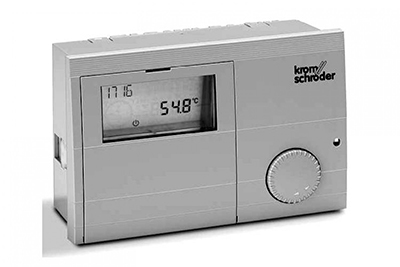
Using special software, the owner of the device sends signals to control its operation.
Thermostats with GSM system are controlled via telephone communication. To do this, it is enough to use any SIM card with mobile Internet.
The device can also be controlled via SMS, but to do this you need to enter into the automation program the phone numbers that it trusts.
In case of changing the SIM card, a password is provided: it is entered when sending an SMS. In complex devices, a password is installed. voice recognition sensorThey are dialed using the same principle as with messages (from trusted numbers), and the command is given out loud.
Heating controller
It is an electrical appliance whose purpose is configure the parameters of connected devices, adjusting their operation. Controllers are used in heating systems to control the fuel supply to boilers.
The KO is a block with several elements. Their purpose is to allow the owner to manually adjust the boiler temperature. The controller is configured to automatically process data received from thermometers.
Programming the device requires software skills, but allows you to build a heating system that saves fuel. With the help of KO, not only classic piping is configured, but also warm floors and other climate controllers.
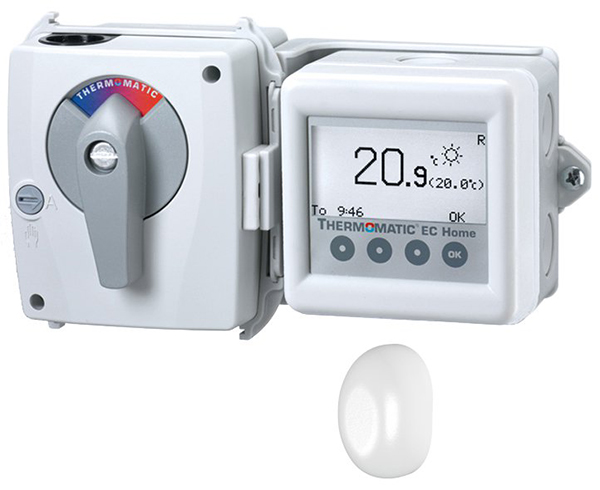
Photo 3. The Thermomatic heating controller is required to control the fuel supply to the boilers.
The main advantages of the controller:
- Possibility to connect any heating devices without programming. The lack of software reduces the flexibility of the device, but allows manual adjustment of the piping, controlling the entire system. For this purpose, terminals with several operating positions are installed in the block.
- Installation variability: The KO can be placed almost anywhere in the building. Most devices are capable of operating remotely. up to 100 meters from the point of impact on the harness.
- The device is also configured to influence the hot water supply.
- The presence of GPS allows you to receive data and control heating over large distances.
The main disadvantage of KO is the need for lengthy programming for full automation.
Features of climate automation in a Smart Home

To create control you will need to spend a large sum for installation controllers and sensors. They will also have to be included in the system, which is not difficult, but labor-intensive. Then you should Setting up devices and setting operating principles.
Some automated Smart Homes include heating control. It can be standard, with separately connected devices, or centralized, in which commands are given to the entire system. The latter is preferable, since reduces the amount of resources, spent on work.
Attention! For full operation of control devices it is necessary installation of two types of sensors. The first ones are placed in a heated room, the second ones - outside. By combining the readings, the system better manages fuel consumption, which leads to savings on the operation of automation.
Useful video
The video will help you learn about the important principles of operation of an automatic heating control system.
Reduction of heating fees
The installation of the system allows for significant reduce utility bills. The devices turn off the heating of the room if it is not needed. This reduces the cost of resources, which after some time will lead to a decrease in the cost of heating.








